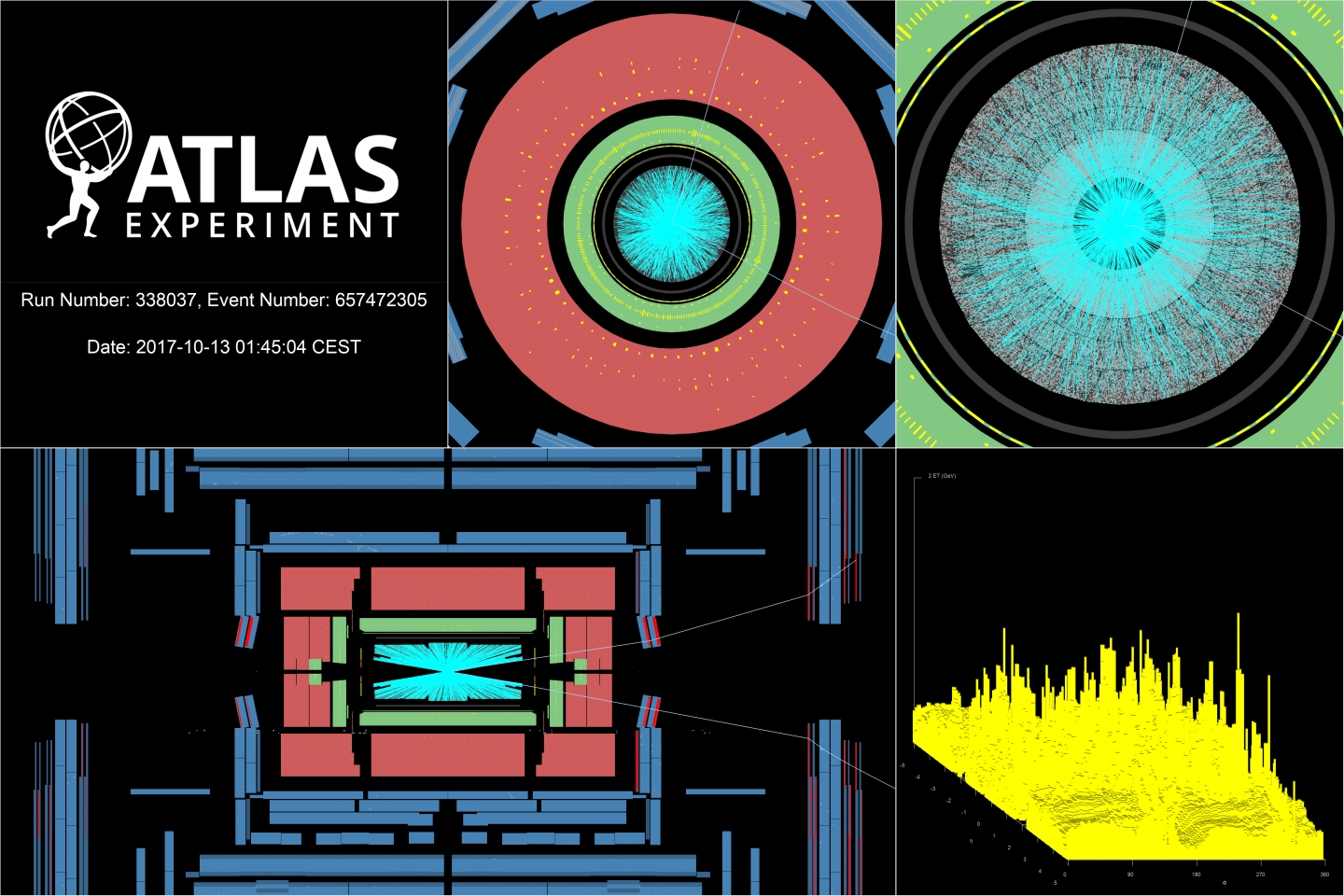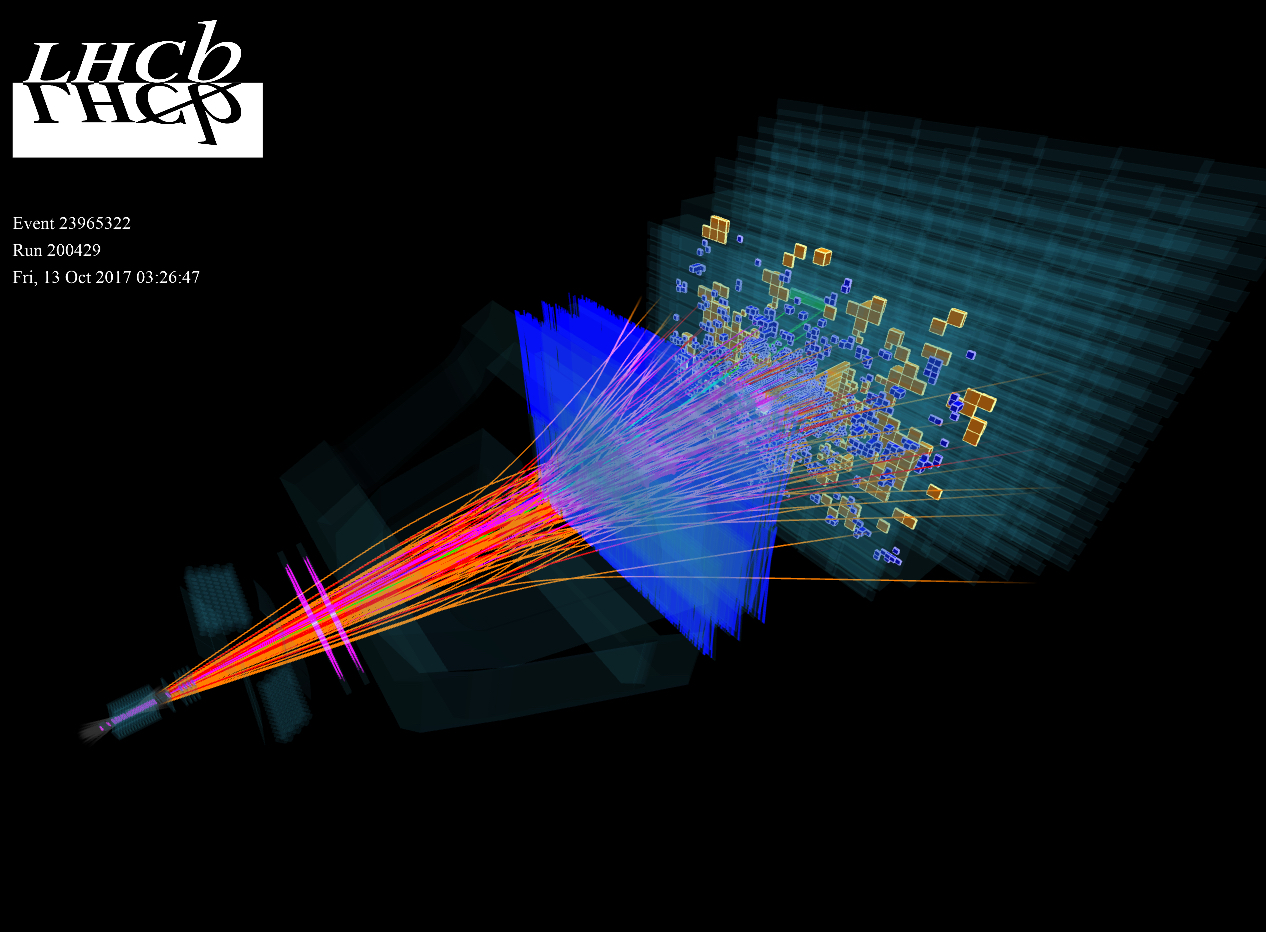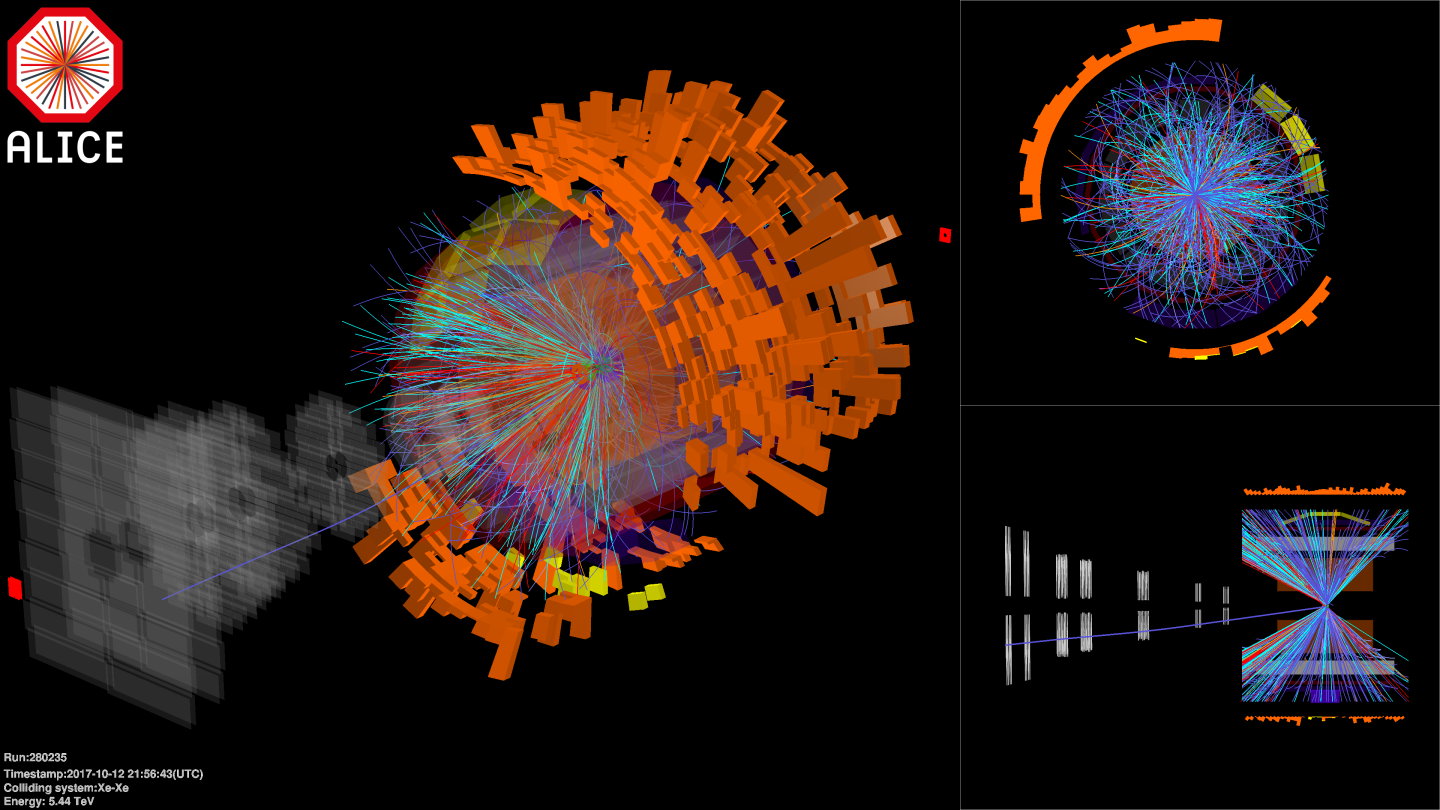Once more, the LHC has revealed a new side to its extraordinary flexibility. So far, collisions of protons, lead nuclei, and protons with lead nuclei have been performed on a regular basis. On Thursday 12 October, a new species joined this particle zoo. Fully stripped xenon (Xe) nuclei were successfully injected into both beam pipes, accelerated and collided for the very first time. This special heavy-ion physics run was added into the schedule just after a high-intensity proton physics fill, and was completed in less than one day. The four LHC experiments collected Xe-Xe collisions at a centre-of-mass energy of 5.44 TeV per colliding nucleon pair.
As part of the NA61 fixed-target physics programme, the injector complex currently provides Xe ions to the SPS. This opened up the possibility of also extracting Xe beams and sending them to the LHC. Even though xenon collisions were not originally part of the LHC schedule, the physics results obtained during the stunningly successful 18-hour proton-lead pilot run in 2012 supported the idea of a short Xe-Xe run following a similar rapid implementation plan. This was a unique opportunity, since Xe, or indeed any other particle apart from protons and lead nuclei, may never again be available in the injector chain. Colliding xenon nuclei at the LHC beam energy of 2.72 TeV per nucleon, opens up significant new physics potential, elucidating the system-size dependence of the rich phenomena observed in the Quark-Gluon Plasma. This was the highest energy to which such nuclei have ever been accelerated and the xenon isotope with an atomic mass number of A=129 and a charge of Z=54 probes an intermediate region between the LHC’s lead (A=208, Z=82) and proton (A=1, Z=1) beams.

For this year’s heavy-ion operation of the CERN accelerator complex, the ion source connected to Linac3 was modified to produce xenon ions. After being stripped of all electrons on the way from the linac through LEIR and the PS, the Xe nuclei arrive in the SPS, from where they will be extracted to the North Area for eight weeks from 23 October. Injecting them into the LHC required careful setup of a special SPS cycle and optimisation of the beam quality (emittance and intensity) to collider level in the injectors. In order to minimise the setup time for this run in the LHC and give the experiments more time to take data, the current LHC proton physics configuration was used with only minor modifications. Nevertheless, the RF frequency, the synchronisation between the SPS and the LHC, the transfer lines and the injection kickers all had to be adapted to the new beam. The only change made to the collision configuration was a reduction of the crossing angle in the ALICE detector to allow neutrons to pass unimpeded to its zero-degree calorimeter (ZDC) forward detectors.

Establishing the first circulating Xe bunch in the LHC and optimising the beam parameters took about four hours. The LHC was then filled with 20 bunches per ring, providing between 8 and 16 collisions per experiment. This was the maximum allowed, because the total number of particles per beam had to stay below the ‘safe beam limit’ of 3 × 1011 charges for reasons of machine protection. The subsequent acceleration, squeeze and collision-finding steps went smoothly. Collimation loss maps were carried out to certify safe operation with the new beam species (heavy ions have much more complicated interactions with collimators than protons). Unfortunately, this first fill was lost at the very moment that ‘Stable Beams’ were declared. The LHC was refilled, taking advantage of an opportunity to accept higher bunch intensity and, therefore, luminosity. This time, the LHC went on to successfully deliver 6 hours of physics data, during which ATLAS and CMS collected a few µb-1 of integrated luminosity. ALICE and LHCb collected considerably less because of the focusing scheme inherited from proton operation. At the end of the fill, scans were performed in LHCb and CMS for luminosity calibration and the fill ended with some additional loss maps for collimation studies.
Along the way, we obtained a wealth of data on the behaviour of the LHC itself with the new species of beam particle. This will allow us to test theories of how the beams evolve, their interactions with collimators and the ultra-peripheral collision effects that can affect collider performance.
Following this fill for physics data-taking, the beams were renewed with a similar number of Xe ions to perform a machine development study on the test installation for crystal collimation at high energy.


